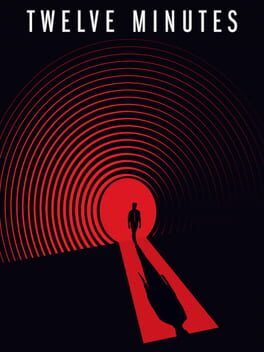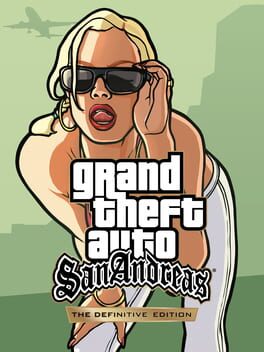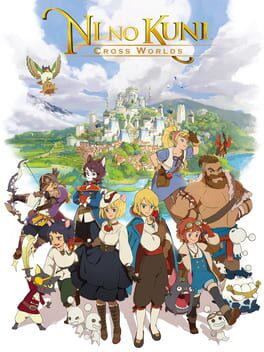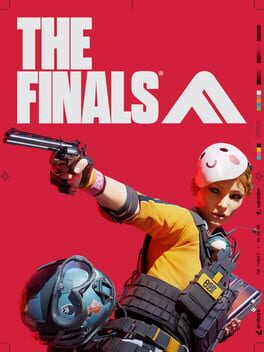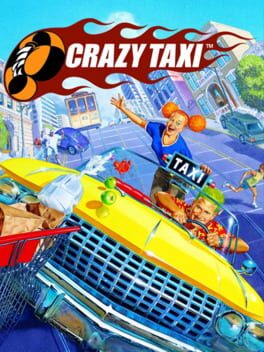BeachEpisode
2021
Feels like one of those Netflix originals you watch out of muted interest in the premise, but ends up being so dry and unaffecting that you forget all about it as the credits roll. Why did they get James McAvoy and Daisy Ridley to do American accents lol were their weird performances really worth it.
What's legitimately interesting to me is how the problem of remasters is unique to videogames. How these embiggening projects almost always bear fruit when it comes to album remasters or movies and tv using original film to improve what was previously strictly standard def. One of the best examples of this I can think of is the painstaking amount of work that went into bringing Star Trek TOS and TNG into high def. For me, there's the more personal example of the Twin Peaks blu-rays being impeccable, managing to keep that VCR warmth and fuzziness in its translation of film grain and colour bleed. There may often be cases where music rights were lost in transition, forcing awkward song changes, or the cack-handed handling of an aspect ratio, trimming important visual cues from a piece, awkward colourisation of b&w - but in a general sense, it's very rare for these remasters to be seen as anything but superior. The added visual fidelity, allowing fans to take in more detail like subtle facial acting or the intricacies of set design that were previously blurred, tends to be lauded.
But games are very different. In this tech-head driven industry engrossed in 4k 60FPS and the latest graphics card magic tricks like Raytracing and volumetric fog or whatever, the audience is utterly convinced that HD is the standard. There seems to be an added pressure on publishers to go the extra mile with their remasters of titles from the 6th console generation, as it’s no longer enough to simply do a faithful port of the title to 1080p. In its attempt to please the increasingly discerning crowd, the modern remaster's attempt to improve visual fidelity can drastically shift the base game's artstyle so as to almost be contrasting with what it used to represent. Something as simple as a general shift in colour scheming can be surprisingly effective at making a game feel a certain way, and this remaster noticeably lacks that sunbleached orange I found so characteristic of SA, among too many other minor things to list off. CJ may have a much greater level of visual detail on his character model, but the animations are the same, it's all playing into that uncanny valley thing where the lack of cohesion genuinely seems to make the bigger picture look worse. It’s definitely going to play into why people are feeling weirded out at his hand clipping through doors or contorting incorrectly etc.
Generally, issues with remasters tend to come as a result of these projects being handed to a separate team to the one that developed the original. I for real don't want to begrudge the people making these remasters, nor would I ever pretend to know how these sausages are made; I’m sure it's an enormous task to reverse engineer titles from a generation with infamously poor ethics regarding the backups of source code. It's just... wild to me how this keeps happening. How much more divided people tend to be between the og game and the remake than to film or whatever. Like them or not, it's curious to me to see just how much of a tonal shift is accomplished in remasters like the Shadow of the Colossus one, despite the game sharing what is essentially the same foundation. The way gaps in visual fidelity are filled in by people who weren’t present on the dev team, where the needle begins to slant and the remaster begins to feel more like Bluepoint’s vision than Team Ico’s. It tends to be soundtrack reorchestration that frustrates me the most, one of the most effective ways to belligerently throw a stick of dynamite in what the vibes used to represent. It’s almost expected to have some things lost in translation, and not even just by cultural differences, but through the team’s personal preferences on top of the mandated requirements to use each available teraflop of the microchip. It’s a game of telephone.
Granted, in the case of these GTA remasters, the recent example of XIII and the infamous Silent Hill ones, people seem to share a closer consensus. But what can the average consumer do? Rockstar pulled the original versions from PC storefronts essentially requiring prior ownership or piracy. Until emulation becomes elementary on all hardware, this is the “definitive edition” and you’ll have no say, because they have ambient occlusion now.
But games are very different. In this tech-head driven industry engrossed in 4k 60FPS and the latest graphics card magic tricks like Raytracing and volumetric fog or whatever, the audience is utterly convinced that HD is the standard. There seems to be an added pressure on publishers to go the extra mile with their remasters of titles from the 6th console generation, as it’s no longer enough to simply do a faithful port of the title to 1080p. In its attempt to please the increasingly discerning crowd, the modern remaster's attempt to improve visual fidelity can drastically shift the base game's artstyle so as to almost be contrasting with what it used to represent. Something as simple as a general shift in colour scheming can be surprisingly effective at making a game feel a certain way, and this remaster noticeably lacks that sunbleached orange I found so characteristic of SA, among too many other minor things to list off. CJ may have a much greater level of visual detail on his character model, but the animations are the same, it's all playing into that uncanny valley thing where the lack of cohesion genuinely seems to make the bigger picture look worse. It’s definitely going to play into why people are feeling weirded out at his hand clipping through doors or contorting incorrectly etc.
Generally, issues with remasters tend to come as a result of these projects being handed to a separate team to the one that developed the original. I for real don't want to begrudge the people making these remasters, nor would I ever pretend to know how these sausages are made; I’m sure it's an enormous task to reverse engineer titles from a generation with infamously poor ethics regarding the backups of source code. It's just... wild to me how this keeps happening. How much more divided people tend to be between the og game and the remake than to film or whatever. Like them or not, it's curious to me to see just how much of a tonal shift is accomplished in remasters like the Shadow of the Colossus one, despite the game sharing what is essentially the same foundation. The way gaps in visual fidelity are filled in by people who weren’t present on the dev team, where the needle begins to slant and the remaster begins to feel more like Bluepoint’s vision than Team Ico’s. It tends to be soundtrack reorchestration that frustrates me the most, one of the most effective ways to belligerently throw a stick of dynamite in what the vibes used to represent. It’s almost expected to have some things lost in translation, and not even just by cultural differences, but through the team’s personal preferences on top of the mandated requirements to use each available teraflop of the microchip. It’s a game of telephone.
Granted, in the case of these GTA remasters, the recent example of XIII and the infamous Silent Hill ones, people seem to share a closer consensus. But what can the average consumer do? Rockstar pulled the original versions from PC storefronts essentially requiring prior ownership or piracy. Until emulation becomes elementary on all hardware, this is the “definitive edition” and you’ll have no say, because they have ambient occlusion now.
Quite liked the latest joy-athon from the videogame industry's House of Mouse. Probably the most important distinction that wasn't hugely apparent to me in the leadup to Kirby Automata's release is that this game wouldn't take quite as many leaves out of Mario Odyssey's book as it would Super Mario 3D World. Not a problem to me, I personally (much) prefer the latter, and even think the bespoke isolated rollercoaster level format suits Kirby much better.
Where Forgotten Land falls short for me is that it really just doesn't do enough to prove that the additional control axis does a whole lot in Kirby's favor. While movement is a joy, as well as laying waste to flora and fauna while spewing bottomless bombs and flames, it all feels like a typical scrimblo affair - uncannily like Crash Bandicoot 3 at times specifically lol.
This game has 12 copy abilities. Twelve. If Kirby's Adventure on the NES has you beat by over double, you know something's up. The low ability count in turn means that there just isn't a whole lot of enemy variety, exemplified thru the fact that the game boasts a similar number of boss battles of varying size it spreads thinly across its many repeating arena sections. This also means that the environmental puzzles are hilariously rudimentary this time around too. The most you could expect your brain to be teased would be trying to find a Waddle Dee hidden in some offscreen obtuse nook, rather than needing to intuit the environment & scavenge the key ability needed. The abilities themselves are also stripped down to bare essentials too. Gone are the surprisingly complex input movelists of Triple Deluxe and Robobot; mastery of Forgotten Land comes from going to the town hub to menu-somely upgrade your copy abilities to objectively better versions with rather dull statistical upgrades.
Should stress that this is Fine. I don't exactly need Kirby games to be roving epicks of skill and wit, but Forgotten Land is sorely missing the subtle sleight of hand tricks I'd call a series mainstay. Even the title's proud Mouthful Mode gimmick is fully explored in the first world. The variety isn't present where it would be in prior Kirby games and it leaves many checkpoints feeling tiresome and rote.
Still, rly pretty and rly cute with gr8 musique. Not enough games let you breath life back into a devastated town.
The true final boss is fucking sick though. Maliketh, The Black Blade wishes it could.
Where Forgotten Land falls short for me is that it really just doesn't do enough to prove that the additional control axis does a whole lot in Kirby's favor. While movement is a joy, as well as laying waste to flora and fauna while spewing bottomless bombs and flames, it all feels like a typical scrimblo affair - uncannily like Crash Bandicoot 3 at times specifically lol.
This game has 12 copy abilities. Twelve. If Kirby's Adventure on the NES has you beat by over double, you know something's up. The low ability count in turn means that there just isn't a whole lot of enemy variety, exemplified thru the fact that the game boasts a similar number of boss battles of varying size it spreads thinly across its many repeating arena sections. This also means that the environmental puzzles are hilariously rudimentary this time around too. The most you could expect your brain to be teased would be trying to find a Waddle Dee hidden in some offscreen obtuse nook, rather than needing to intuit the environment & scavenge the key ability needed. The abilities themselves are also stripped down to bare essentials too. Gone are the surprisingly complex input movelists of Triple Deluxe and Robobot; mastery of Forgotten Land comes from going to the town hub to menu-somely upgrade your copy abilities to objectively better versions with rather dull statistical upgrades.
Should stress that this is Fine. I don't exactly need Kirby games to be roving epicks of skill and wit, but Forgotten Land is sorely missing the subtle sleight of hand tricks I'd call a series mainstay. Even the title's proud Mouthful Mode gimmick is fully explored in the first world. The variety isn't present where it would be in prior Kirby games and it leaves many checkpoints feeling tiresome and rote.
Still, rly pretty and rly cute with gr8 musique. Not enough games let you breath life back into a devastated town.
The true final boss is fucking sick though. Maliketh, The Black Blade wishes it could.
1998
Can you feel the heat?
When the tires kiss the street
Move into the beat
Ever since I learned about occlusion culling, a technique deftly handled by Naughty Dog with their first PlayStation 1 title, Crash Bandicoot, my appreciation for the more graphically stellar titles for the system was granted a new shade. It helped offer me a frame of reference (granted, of one of the more extreme use cases) for the necessity to obscure unneeded geometry to save what precious few resources the console could afford - as well as giving me something to mull over whenever I play a 3D PS1 game that looks suspiciously good. Much akin to Crash Bandicoot, racing games benefit from what is essentially a densely curated linear track. With limited camera movement, every attainable viewing angle can be accurately poured over by the designers, letting them carefully weigh up exactly how much they can get away with at every meter of game space. This is very apparent in visually stunning racing titles like Wipeout 3, Colin McRae Rally 2.0, and Need for Speed: High Stakes; their tracks are glutted with turns, verticality and obstacles that exist to obscure as much model pop-in as possible, and offer a new piece of visual stimuli at every turn. This has a knock-on effect for how these tracks are actually driven on, too. Track designers are by necessity discouraged from long straightaways where the world noticeably phases into existence, and instead ensure that the player has very little if any downtime from cornering, maintaining a thrilling tempo that only stops when the chequered flag is waved. I say all this, because I really do miss the era where racing games were these hardware-defying explosions of style and skill, with enough big-money backing to allow the designers to let their perfectionism and neuroses get tangled in the engine’s crankshaft. I can only go in a straight line down a massive realistic unreal engine map for so long.
Anyway. Ridge Racer Type 4 is a Swiss watch. One of very, very few games I’d describe as “meticulous”. Every one of its moving parts serves a key purpose in its grand design. Its mechanisms are the result of painstaking consideration for the most minute details. Built to last, and never lose its sheen. The only game my dad likes (real). It all just moves & breathes with this air of confidence and romance, exemplified by the way the penultimate setpiece is the final lap taking place at the exact turn of the millennium - a genuinely affecting gesture to barrel through doubt and seize your future by any means.
One thing I’m particularly taken by is the overall stylistic presentation of Type 4. Among the first things you see upon loading it up are the game’s signature tail/headlight afterglows leaving trails across the screen. The preamble at the start of this review was for no reason other than the fact that R4 actualises the PS1. Its environments use every trick in the book with a healthy serving of incredible models & baked-in textures to make the world feel rich beyond the scope of the road. The game’s UI alone is worth studying for its consistent use of very few colours, empty-space and minimalist decoration (every game needs a "PLEASE" in the corner at all times). In establishing a universe that seemingly exists solely for the purpose of racing fictional cars around the fictional Ridge City, the developers at Namco have populated the series with a mountain of logos, icons, banners, signs, patterns, manufacturers, liveries and colour palettes. They work to establish the curves, hills and tunnels as very real places with a history all their own. How did Wonderhill get its name? Why is it called Shooting Hoops? Where are these places in Ridge City and how do they fit into the Ridge Racer universe?
Look at the Helter Skelter track’s logo, for instance. One of the things I enjoy about this logo is its deceptively simple construction that results in a complex visual illusion of sorts. Essentially, the structure is a series of circles that reduce in size from top to bottom. The circles do not change shape in the slightest, only in scale, and by removing their intersections and filling in some minor spaces to complete the shape, is this illusion achieved. It harkens to the track’s multi-levelled nature, conveying a sense of movement as you rapidly weave through overpasses and underground tunnels w/ the ferocity of a hurricane.
The whole game is like this. A veritable archive of mindful audio, visual and game design, of weapons-grade artistic talent. Beyond aspirational and genuinely medium affirming.
When the tires kiss the street
Move into the beat
Ever since I learned about occlusion culling, a technique deftly handled by Naughty Dog with their first PlayStation 1 title, Crash Bandicoot, my appreciation for the more graphically stellar titles for the system was granted a new shade. It helped offer me a frame of reference (granted, of one of the more extreme use cases) for the necessity to obscure unneeded geometry to save what precious few resources the console could afford - as well as giving me something to mull over whenever I play a 3D PS1 game that looks suspiciously good. Much akin to Crash Bandicoot, racing games benefit from what is essentially a densely curated linear track. With limited camera movement, every attainable viewing angle can be accurately poured over by the designers, letting them carefully weigh up exactly how much they can get away with at every meter of game space. This is very apparent in visually stunning racing titles like Wipeout 3, Colin McRae Rally 2.0, and Need for Speed: High Stakes; their tracks are glutted with turns, verticality and obstacles that exist to obscure as much model pop-in as possible, and offer a new piece of visual stimuli at every turn. This has a knock-on effect for how these tracks are actually driven on, too. Track designers are by necessity discouraged from long straightaways where the world noticeably phases into existence, and instead ensure that the player has very little if any downtime from cornering, maintaining a thrilling tempo that only stops when the chequered flag is waved. I say all this, because I really do miss the era where racing games were these hardware-defying explosions of style and skill, with enough big-money backing to allow the designers to let their perfectionism and neuroses get tangled in the engine’s crankshaft. I can only go in a straight line down a massive realistic unreal engine map for so long.
Anyway. Ridge Racer Type 4 is a Swiss watch. One of very, very few games I’d describe as “meticulous”. Every one of its moving parts serves a key purpose in its grand design. Its mechanisms are the result of painstaking consideration for the most minute details. Built to last, and never lose its sheen. The only game my dad likes (real). It all just moves & breathes with this air of confidence and romance, exemplified by the way the penultimate setpiece is the final lap taking place at the exact turn of the millennium - a genuinely affecting gesture to barrel through doubt and seize your future by any means.
One thing I’m particularly taken by is the overall stylistic presentation of Type 4. Among the first things you see upon loading it up are the game’s signature tail/headlight afterglows leaving trails across the screen. The preamble at the start of this review was for no reason other than the fact that R4 actualises the PS1. Its environments use every trick in the book with a healthy serving of incredible models & baked-in textures to make the world feel rich beyond the scope of the road. The game’s UI alone is worth studying for its consistent use of very few colours, empty-space and minimalist decoration (every game needs a "PLEASE" in the corner at all times). In establishing a universe that seemingly exists solely for the purpose of racing fictional cars around the fictional Ridge City, the developers at Namco have populated the series with a mountain of logos, icons, banners, signs, patterns, manufacturers, liveries and colour palettes. They work to establish the curves, hills and tunnels as very real places with a history all their own. How did Wonderhill get its name? Why is it called Shooting Hoops? Where are these places in Ridge City and how do they fit into the Ridge Racer universe?
Look at the Helter Skelter track’s logo, for instance. One of the things I enjoy about this logo is its deceptively simple construction that results in a complex visual illusion of sorts. Essentially, the structure is a series of circles that reduce in size from top to bottom. The circles do not change shape in the slightest, only in scale, and by removing their intersections and filling in some minor spaces to complete the shape, is this illusion achieved. It harkens to the track’s multi-levelled nature, conveying a sense of movement as you rapidly weave through overpasses and underground tunnels w/ the ferocity of a hurricane.
The whole game is like this. A veritable archive of mindful audio, visual and game design, of weapons-grade artistic talent. Beyond aspirational and genuinely medium affirming.
Ghibli-esque artstyle as a front for, no exaggeration, the game equivalent of fracking. Set your phone down on the table and do something else while it aggressively autoplays through quite literally all of its content. With blockchain integration and NFTs proudly on the game's roadmap, how can you not be excited to let this piece of shit suck your battery dry.
2023
1999
2022
When Demon’s Souls released in 2009, I was going through a pretty hard crisis of faith regarding videogames. I had grown old enough to finally see their limits, the industry-imposed repetition and condescention in their design, the corners that have to be cut and padded. I blindly took the advice from a few raving cynics I aligned myself with and imported Demon’s Souls from America as a last shot before I defiantly moved on from the medium like the little drama queen I was. DeS was exactly the game I needed, I had never played anything else like it, I had my mind shattered by the way the bosses in the title weren’t so much battles as they were puzzle boxes - imposing small situations to solve, being asked to find the lone small thread that will make the beast unravel. It felt like a NeverEnding Story adventure or something, I loved it, I still do.
With every new Fromsoft game, Hidetaka Miyazaki takes the opportunity to twist the dial even further from Adventure Fantasy to Battle Fantasy, the focus becoming more oriented around a type of mechanisation I personally find diagnostic-feeling, much less fulfilling - stat optimising and gear building, rote memorisation of excruciatingly difficult boss movesets. Very disenchanting open world too; everything in every corner is there to make your character more powerful, a handful of “types” of dungeon/outpost, a truly memetic core routine that made me feel like I was just playing Genshin Impact. This is obviously just a preference thing, but you must forgive me for feeling a little left behind.
There is a lot beauty in Elden Ring’s world, if I had anyone to thank for giving me the desire to trudge through this game to the end, it’ll be the stellar art and design team. Some of the most stunning locales I’ve seen in a minute; I’m particularly fond of miquellas haligtree, crumbling farum azula, and even revisiting Radahn’s arena post-battle for a taste of what I’d personally hoped exploring Elden Ring’s open world would feel like. The monster designs are nuts too, some skirting the perfect balance between recognisable and grotesque to lend some genuine unease.
Elden Ring is a fantastic game, just not a game for me. It actually gives me a little tinge of sadness to play a Fromsoft title and be made to think “this reminds me of another game” so many times. I respect the player-hostility maximalism of the bosses and the dizzying open-endedness of character builds - and in all honestly, Elden Ring very clearly has some of the richest thematic storytelling across the Miyazaki platter right now - I would just rather watch people snap the game over their knee on Youtube than ever play this again.
With every new Fromsoft game, Hidetaka Miyazaki takes the opportunity to twist the dial even further from Adventure Fantasy to Battle Fantasy, the focus becoming more oriented around a type of mechanisation I personally find diagnostic-feeling, much less fulfilling - stat optimising and gear building, rote memorisation of excruciatingly difficult boss movesets. Very disenchanting open world too; everything in every corner is there to make your character more powerful, a handful of “types” of dungeon/outpost, a truly memetic core routine that made me feel like I was just playing Genshin Impact. This is obviously just a preference thing, but you must forgive me for feeling a little left behind.
There is a lot beauty in Elden Ring’s world, if I had anyone to thank for giving me the desire to trudge through this game to the end, it’ll be the stellar art and design team. Some of the most stunning locales I’ve seen in a minute; I’m particularly fond of miquellas haligtree, crumbling farum azula, and even revisiting Radahn’s arena post-battle for a taste of what I’d personally hoped exploring Elden Ring’s open world would feel like. The monster designs are nuts too, some skirting the perfect balance between recognisable and grotesque to lend some genuine unease.
Elden Ring is a fantastic game, just not a game for me. It actually gives me a little tinge of sadness to play a Fromsoft title and be made to think “this reminds me of another game” so many times. I respect the player-hostility maximalism of the bosses and the dizzying open-endedness of character builds - and in all honestly, Elden Ring very clearly has some of the richest thematic storytelling across the Miyazaki platter right now - I would just rather watch people snap the game over their knee on Youtube than ever play this again.
